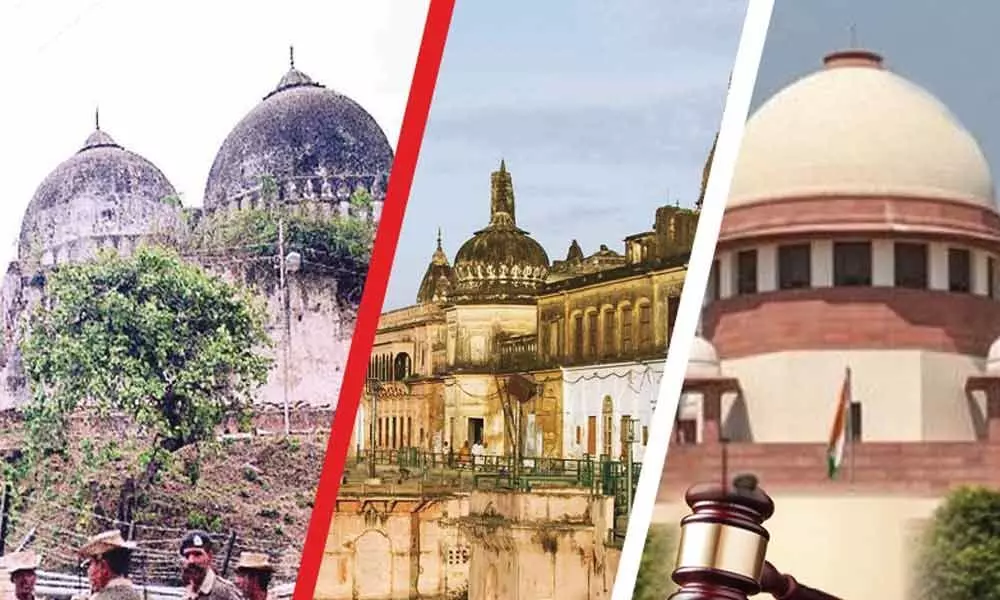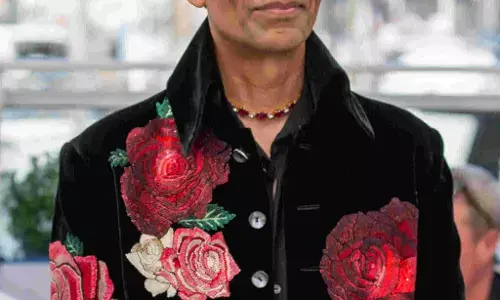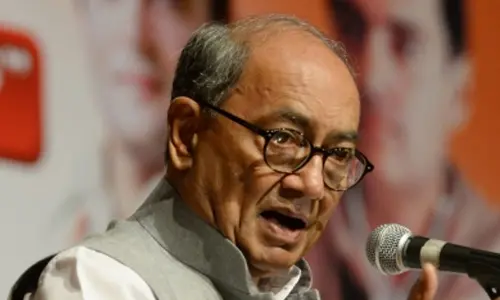Loose fragments of forgotten history taken into account

The judgement in the vexatious Ayodhya case refers to travelogues by several persons who had visited India from the 17th-19th century, with the Supreme Court saying it has to make a balanced analysis of "loose fragments of forgotten history" related to the site.
The judgement in the vexatious Ayodhya case refers to travelogues by several persons who had visited India from the 17th-19th century, with the Supreme Court saying it has to make a balanced analysis of "loose fragments of forgotten history" related to the site.
"Travelogues and gazetteers contain loose fragments of forgotten history. The evidentiary value to be ascribed to their contents necessarily depends upon the context and is subject to a careful evaluation of their contents," a five-judge constitution bench headed by Chief Justice Ranjan Gogoi has said.
"Our analysis has included in the balance, the need for circumspection, as we read in the accounts of travellers and gazetteers a colonial perspective on the contest at the disputed site," the bench said.
The judgement refers to travelogues by Joseph Tiefenthaler, Robert Montgomery Martin, P Carnegy, Edward Thornton and William Finch among others, which were considered as exhibits in arriving at a conclusion in the case.
As per the travelogues of authors and geographers, the top court said, the oral and documentary evidence showed that devotees of Lord Ram hold a genuine, long-standing and profound belief in the religious merit attained by offering prayer at the site they believe to be the birthplace of the deity.
"We are looking into historical events knit around legends, stories, traditions and accounts written in a social and cultural context different from our own.
There are dangers in interpreting history without the aid of historiography," the bench said.
"Application of legal principles to make deductions and inferences out of historical context is a perilous exercise. One must exercise caution before embarking on the inclination of a legally trained mind to draw negative inferences from the silences of history.
Silences are sometimes best left to where they belong -- the universe of silence," the bench observed.
One of the several authors whose work was taken into account was Joseph Tiefenthaler, a Jesuit missionary who has mentioned in his book 'Description Historiqueet Geographique Del'inde' about his travels to Ayodhya after 1740, a little over three decades after the death of Mughal ruler Aurangzeb.
Tieffenthaler refers to the alleged demolition of the temple and the building of a mosque on the site, which the Hindus believe to be the birth place of Lord Ram.
He specifically refers to Hindu places of worship, including 'Sita rasoi', 'swargdwar' and the 'bedi' or cradle symbolising the birth of Lord Ram and also mentions religious festivals during which Hindu devotees would throng for worship.
The account notes that in spite of the alleged demolition of the structure on which the Babri mosque was built, there still exists some superstitious cult in some place or other that continues to worship at the site.
The bench was also presented with 'History, Antiquities, Topography and Statistics of Eastern India' written by Robert Montgomery Martin, an Anglo-Irish author who has referred in his travel accounts to the destruction of temples and building of mosques. "Martin has also adverted to the presence of pillars in the mosque made up of black stone," the court said.
"The account narrates that these have been taken from a Hindu building which he infers from the traces of the images observable on some of the pillars."
The bench took into consideration the book titled 'Gazetteer of the territories under the Government of East India Company and the Native States on the Continent of India', written by Edward Thornton who also refers to the extensive ruins, said to be those of the fort of Rama.
The bench took into account 'Historical Sketch of Faizabad With Old Capitals Ajodhia and Fyzabad', written by P Carnegy who was posted as the Faizabad officiating commissioner and settlement officer.
In his book, Carnegy has attributed the construction of the mosque to Babur in 1528 and, in his opinion, many of the columns of an erstwhile temple were used in the construction of the Babri mosque.
Carnegy's account, which was published in 1870, has adverted to the incident that took place in 1855, involving a conflict between the Hindus and Muslims.
He refers to the worship being offered by both Hindus and Muslims at the site prior to the incident and to the construction of a railing thereafter with a view to prevent disputes.
"Carnegy notes that the railing was put up so as to separate the two communities, by allowing the Muslims to worship within its precincts in the mosque, while the Hindus had outside it, raised a platform to make their offerings," the bench said.
The court took into account the travel account written by William Finch, in which he notes of a "castle built 400 years earlier and the ruins of Ram Chandra's castle". He also acknowledges the religious beliefs associated with Lord Ram, stating the purpose of his incarnation.
The 'Imperial Gazetteer of India' refers to a vast mound known as Ramkot and the existence at a corner of which is the holy spot where Lord Ram was born. The gazetteer records that most of the enclosure is occupied by a mosque built by Babur from the remains of an old temple.
It refers to the existence of Ram Chabutra in the outer portion that marks the birthplace of Lord Ram. The travel account of one Edward Thornton in the 'Gazetteer of the territories under the Government of East India Company' refers to extensive ruins, said to be those of the fort of Rama.
















